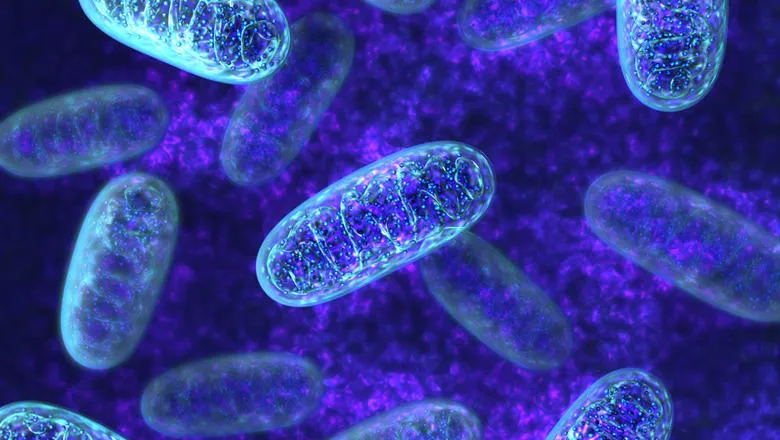“Our study underscores that motor neurons are more susceptible to ALS-causing mutations than closely related interneurons even at a cellular level and this may shed some light on the differential vulnerability of neurons to degeneration.”
Dr Marc-David Ruepp, Reader in RNA Biology and Molecular Neurodegeneration
19 May 2025
Faulty cellular 'energy supply' in Amyotrophic Lateral Sclerosis
New study found two common types of gene mutation in ALS are linked to dysfunction in mitochondria.

A new study, published today in Nature Communications, found that two common gene mutations in ALS are linked to mitochondrial dysfunction. The collaborative study between the research groups of Dr Marc-David Ruepp (UK Dementia Research Institute at King’s College London), Prof Eva Hedlund (Stockholm University), and Dr Christoph Schweingruber (Stockholm University) highlighted a potential new direction for drug development.
Mutations in genes FUS and TARDBP are known to cause ALS, the most common motor neuron disease (MND). ALS is a life-limiting condition which causes progressive muscle weakness and paralysis due to the loss of motor neurons in the brain and spinal cord. Scientists do not yet understand how FUS and TARDBP mutations cause motor neurons to die, while sparing other types of neurons.
To explore this, the researchers performed single-cell RNA sequencing to obtain a detailed view of gene expression within individual cells. They created induced pluripotent stem cells that harbour specific ALS-related mutations in FUS and TARDBP and differentiated them into neurons. Then they compared individual motor neurons with another type of neurons, known as interneurons, which are spared in ALS. The team found that the motor neurons were much more susceptible to the effects of the mutations.
They looked at the effects of different types of FUS mutations on motor neurons and found that about 20% of the abnormal changes in gene activity are shared across different mutations. About half of these shared changes were due to ‘gain-of-function’ mutations, where the mutated protein doesn't just lose its normal function because it is in the wrong place in the cell, but becomes toxic.
Most of the changes shared across mutations in ALS genes were linked to problems with mitochondria, which produce the cell’s energy. These mitochondrial issues were also seen in cells with TARDBP mutations and in cells taken from people with ALS who had another common mutation: C9orf72. Motor neurons are among the largest cells in the human body, and mitochondria need to distribute properly throughout all their parts. The researchers observed that the movement of mitochondria within motor neurons was reduced in ALS mutations, even when the mutated FUS protein was in the right place within the cell.
This suggests that mitochondrial dysfunction may be an early and common event in ALS, which is shared across different gene mutations. This could be a possible target for future treatments, irrespective of the genetic cause of the disease.
Dr Schweingruber said, “The impairment in the movement of mitochondria occur very early in our cellular models of motor neurons. It is crucial that we understand how these defects arise.”
Prof Hedlund added, "We are now trying to understand how these early errors occur in the sensitive motor neurons in ALS, and how it affects energy levels in the cells and their communication and necessary contacts with muscle fibers. We believe that these are important keys to the understanding of why the synapses between motor neurons and muscles is broken in ALS and also to identify new targets for therapies.”
Adapted from UK DRI News.
"Single-cell RNA-sequencing reveals early mitochondrial dysfunction unique to motor neurons shared across FUS- and TARDBP-ALS" (Christoph Schweingruber, Jik Nijssen, Jonas Mechtersheimer, Stefan Reber, Mélanie Lebœuf, Niamh L. O’Brien, Irene Mei, Erin Hedges, Michaela Keuper, Julio Aguila Benitez, Vlad Radoi, Martin Jastroch, Marc-David Ruepp & Eva Hedlund) was published in Nat Commun. DOI: 10.1038/s41467-025-59679-1

